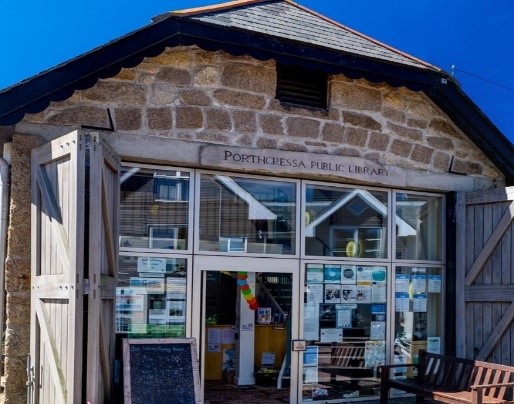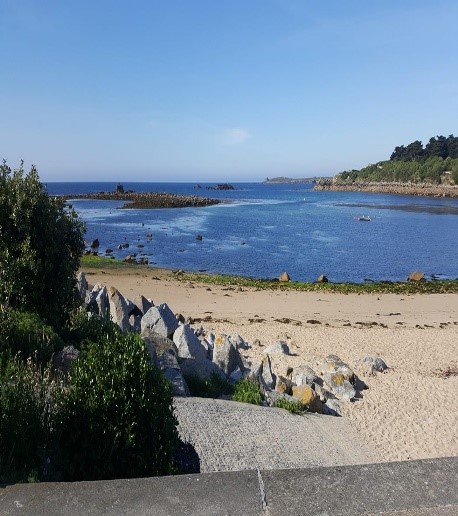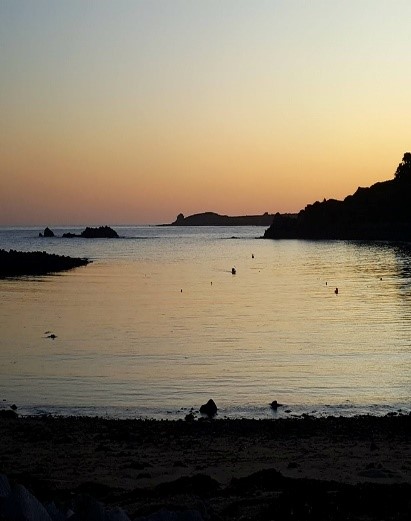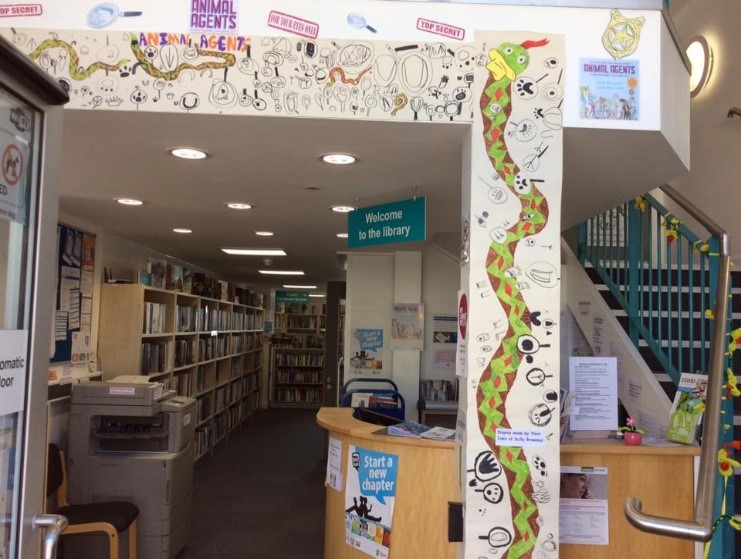
St Mary’s Library has moved around over the past 40 years. When I worked in it previously it was sited at the old school just out of town, then downsized to the Wesleyan Chapel in the town, then downsized again to the old ‘Job Centre’ room, then moved to another site at the new school. Then nine years ago, it finally came here to this wonderful modernised old building by Porthcressa beach with glorious views out of the window.



Like many libraries we have had to embrace change to survive and with the closure of the main reception area for our Unitary Council, the Library has now taken on the role of ‘One Stop Shop’/ Council reception. Because of this our opening hours and staffing have had to change and adapt. We have gone from 10-12.30 & 2.30-4.30 each weekday, to 9-4.30 hence additional staff needed to cover. My role has remained as Librarian and I work solely in the library unlike the other ‘Hub’ staff who share their time between library and the other council reception site. So my working day can include anything from taking money for council things (like tax, rent, licences, planning, waste site, selling waste sacks), booking visits to the dump, booking classes for the swimming pool, and adult learning and dealing with incoming post. Then there is the library work, issuing and discharging books, printing, signing up temporary members (we allow visitors to borrow books), organising any school visits or other events, exchanging books with Cornwall (generally about nine crates of assorted books every eight weeks) to keep our stock rolling. Organising events to launch such as The Reading Challenge, plus like most other libraries in holiday destinations you become the visitor information desk and are asked weird and wonderful things. We are the only public library for our five inhabited Islands. We pay a service charge to Cornwall Council Libraries to enable our library members to access all the online services they offer, such as eBooks/eAudio plus the exchanging of 200+ books every eight weeks and staffing costs.
Like most other Libraries, we were affected by Covid and haven’t yet returned to a full ‘pre-Covid’ service. We are still quarantining books (we use wheelie bins outside the door for this), we are still requesting masks be worn, we have a limit on visiting time and numbers allowed in at one time. We are still working behind a plastic screen which has worked wonderfully well. During lockdown we were coming into work but working behind closed doors. We were on reduced hours like many others. We answered the phones and scanned mail to Council workers and offered an Argos type of service for members (select books and collect) and offered home delivery.
Pre lockdown our previous year had gone well. We were working with Island Partnership (tourism) to accommodate visiting authors (Kate Rhodes was the most recent), troubadours, children’s craft sessions. As well as regular visits from children’s services holding story times, school class visits, Brownies, whist and bridge sessions, monthly book group meetings. We had a Telling Tales / Reading Aloud fortnightly session for adults, where anyone comes along and reads anything they like (poetry, a short anecdote, short paragraph from a book) out loud and finish with a cuppa. The library also offers weekly Computer support with a tutor in attendance for two hours. We also had a Christmas event: Santa in his Grotto at the Library! I have been very lucky so far in having arty, creative, mums giving up their time to help with our displays (we discuss my ideas and they bring them to life) and the local Brownie group who create displays for us.



We have a Facebook page and a blog which we put readers reviews on. Again, something else I have to do but unfortunately I am not very techie so am always reaching out for help. For the future, I would like to see our members being able to video link up with other libraries and their members, perhaps sharing things like the Telling Tales, or an online book group or just a social chat. So if any libraries out there have ideas how we could link I would love to hear from them. We are also looking to link more closely with the school and start a volunteer scheme for the summer. Do you have volunteers in your library, if so what jobs do they do? I’d love to hear from you about what worked and what didn’t.
Also, I’d love to hear from other libraries about any innovative fun events they may be running or new clubs. Maybe we could set up a forum for this?
Linda Thomas linda.thomas@scilly.gov.uk




